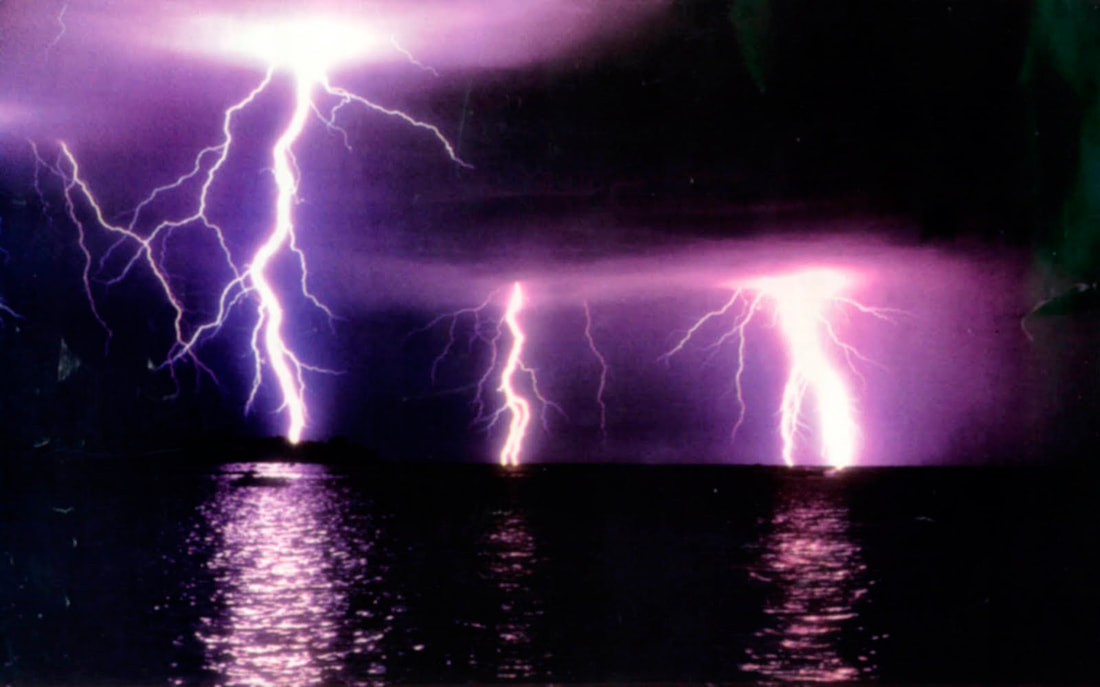Ozonotherapy History
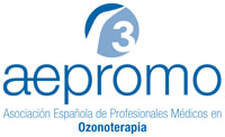
SPANISH ASSOCIATION OF MEDICAL PROFESSIONALS IN OZONE THERAPY
Adriana Schwartz PhD Compilation
Ozone has been known of since ancient times. In fact in Greek “ozein” means “smelling gas”.The Catatumbo Lightning in Venezuela can be considered the major regenerator of the planet’s ozone layer. This phenomenon is capable of producing 1.176 million lightning bolts a year producing 10% of the earth’s ozone layer.
Adriana Schwartz PhD Compilation
Ozone has been known of since ancient times. In fact in Greek “ozein” means “smelling gas”.The Catatumbo Lightning in Venezuela can be considered the major regenerator of the planet’s ozone layer. This phenomenon is capable of producing 1.176 million lightning bolts a year producing 10% of the earth’s ozone layer.
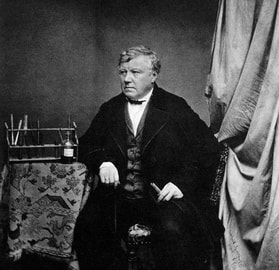
Discovered of the ozone
Ozone was discovered in 1785 by Dutch physicist Martinus Van Marum (1750-1837) by perceiving a peculiar odor that generated near the electrostatic machines, but it was not until May 1840 that the German chemist Christian Friedrich Schönbein (1799-1868) synthesizes it.
Schönbein was the son of a humble dyer who had to work from a young age to help support his eight siblings. With determination and strong will he was educated in physics and chemistry, working in a chemical plant in Erlangen. “The production of Ozone by Chemical Means”, which stated that: “Although physicists and chemists have no idea of the existence of a component, this does not disprove its existence”
Ozone was discovered in 1785 by Dutch physicist Martinus Van Marum (1750-1837) by perceiving a peculiar odor that generated near the electrostatic machines, but it was not until May 1840 that the German chemist Christian Friedrich Schönbein (1799-1868) synthesizes it.
Schönbein was the son of a humble dyer who had to work from a young age to help support his eight siblings. With determination and strong will he was educated in physics and chemistry, working in a chemical plant in Erlangen. “The production of Ozone by Chemical Means”, which stated that: “Although physicists and chemists have no idea of the existence of a component, this does not disprove its existence”
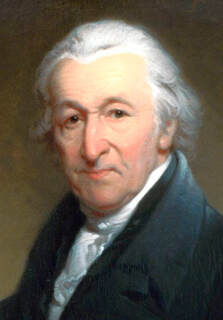
In 1857 Werner von Siemens built the first superior induction tube, with which Kleinmann made the first attempts to destroy microorganisms and the first gas insufflations in animals and humans. In 1870, the German doctor Lender made the first publication on practical biological effects, relating to water disinfection. The discovery of the antimicrobial properties of ozone revolutionized medicine of the time, 70 years still remaining for the emergence of penicillin. The first report on ozone as a purifier of the blood appears
In 1873 Fox discovered the ability of this chemical agent for eliminating microorganisms. There is evidence of its use as a disinfectant since 1881, according to that mentioned by Dr. Kellogg in his book on diphtheria. The discovery crossed the ocean to North America and in 1885, the Florida Medical Association published the first textbook on medical applications of ozone, written by Dr. Kenworth.
In the old continent in 1893, the first facility in Ousbaden (Netherlands) for the disinfection and purification of water for human consumption and waste is created. Till this date, there are more than 3000 water treatment plants with ozone in this country. Zurich, Florence and other cities had been acquiring these systems to disinfect water.
In 1873 Fox discovered the ability of this chemical agent for eliminating microorganisms. There is evidence of its use as a disinfectant since 1881, according to that mentioned by Dr. Kellogg in his book on diphtheria. The discovery crossed the ocean to North America and in 1885, the Florida Medical Association published the first textbook on medical applications of ozone, written by Dr. Kenworth.
In the old continent in 1893, the first facility in Ousbaden (Netherlands) for the disinfection and purification of water for human consumption and waste is created. Till this date, there are more than 3000 water treatment plants with ozone in this country. Zurich, Florence and other cities had been acquiring these systems to disinfect water.
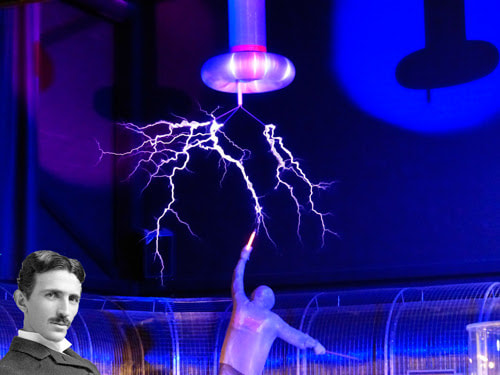
Nikola Tesla (1856-1943) of Croatian origin and latter on US citizen, patented his first ozone generator in 1896; and in 1900 founded Nikola Tesla “Tesla Ozone Co., manufacturer of generators for medical use. Tesla was the first to ozonate olive oil.
According to Life Magazine’s special issue of September, 1997, Tesla is among the 100 most famous people of the last 1,000 years. Tesla was an enigmatic, eccentric and owner of a magnificent imagination when applied to the field of science, led him to developing ideas that came into dispute with the conventional knowledge of the time. An example of this is the Alternating Current, which at the time, crashed head-on with Thomas Alva Edison’s Direct Current.
The United States Supreme Court, in 1943 held Tesla as the inventor of radio technology and declared invalid the patent given to Marconi.
Tesla was a generous man, whose great concern was to ensure that energy were free and his pacifist ideals always advocated that his inventions were not used for military purposes.
n 1898 Drs. Thauerkauf and Luth create in Germany the Institute of Oxygen-Ozone Therapy and publish the first studies in animals.
Medical Ozone in the XX Century
In 1911, Dr. Noble Eberhart, head of the Department of Physiology of Loyola Chicago University, in the “Manual of High Frequency Operation”, states that he used ozone to treat tuberculosis, anemia, chlorosis, tinnitus, whooping cough, asthma, bronchitis, hay fever, insomnia, pneumonia, diabetes, gout and syphilis. He creates the first university teaching center dedicated among other things to ozone therapy.
According to Life Magazine’s special issue of September, 1997, Tesla is among the 100 most famous people of the last 1,000 years. Tesla was an enigmatic, eccentric and owner of a magnificent imagination when applied to the field of science, led him to developing ideas that came into dispute with the conventional knowledge of the time. An example of this is the Alternating Current, which at the time, crashed head-on with Thomas Alva Edison’s Direct Current.
The United States Supreme Court, in 1943 held Tesla as the inventor of radio technology and declared invalid the patent given to Marconi.
Tesla was a generous man, whose great concern was to ensure that energy were free and his pacifist ideals always advocated that his inventions were not used for military purposes.
n 1898 Drs. Thauerkauf and Luth create in Germany the Institute of Oxygen-Ozone Therapy and publish the first studies in animals.
Medical Ozone in the XX Century
In 1911, Dr. Noble Eberhart, head of the Department of Physiology of Loyola Chicago University, in the “Manual of High Frequency Operation”, states that he used ozone to treat tuberculosis, anemia, chlorosis, tinnitus, whooping cough, asthma, bronchitis, hay fever, insomnia, pneumonia, diabetes, gout and syphilis. He creates the first university teaching center dedicated among other things to ozone therapy.
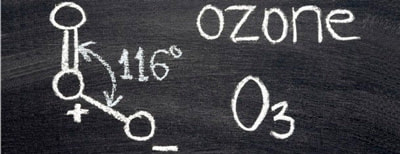
GERMANY
Dr. Blass founds in 1913 the first German association of ozone therapy.
Meanwhile, the First World War in Europe had just exploded. In 1915, Dr. Wolf, chief surgeon of the medical services of the German army, extends its use for topical treatment of infected wounds, frozen foot, gangrene and decubitus ulcers.
For the first time in Switzerland, a dentist, Dr. Fish published in 1932 the applications of ozone in dentistry to treat caries, and patented the first device specifically for this application, the Cytozon.
In 1935 Edwin Payr (Austrian-German) shows the wound healing effect of ozone.
In Germany, after the outbreak of World War II, Dr. Wolf published “Medical Ozone”, the most classic book about ozone therapy, which has come down to us as the Bible of the medical books dedicated to the ozone therapy.
Dr. Blass founds in 1913 the first German association of ozone therapy.
Meanwhile, the First World War in Europe had just exploded. In 1915, Dr. Wolf, chief surgeon of the medical services of the German army, extends its use for topical treatment of infected wounds, frozen foot, gangrene and decubitus ulcers.
For the first time in Switzerland, a dentist, Dr. Fish published in 1932 the applications of ozone in dentistry to treat caries, and patented the first device specifically for this application, the Cytozon.
In 1935 Edwin Payr (Austrian-German) shows the wound healing effect of ozone.
In Germany, after the outbreak of World War II, Dr. Wolf published “Medical Ozone”, the most classic book about ozone therapy, which has come down to us as the Bible of the medical books dedicated to the ozone therapy.
Ozone generators of the time, many made with glass components, were not practical for field hospitals and could not compete on convenience and ease of use with new antibiotics that had appeared.
Despite its obvious usefulness, ozone as a healing method for infectious diseases, gradually falls into disuse. Moreover, in 1940, the U. S. Food and Drug Administration (FDA) began sealing of medical ozone generators, promoting their own pharmaceutical industry, reinforced after the acquisition of a pharmaceutical giant of the moment, the German Bayer.
The emergence of plastics resistant to ozone leads in 1957, German physician Dr. Hänsler to manufacture the first modern ozone generator, which modern day generators base themselves of.
In 1961 Dr. Hans Wolff introduced in his practice the major and minor autohemotherapy. In the early 70 the German Society of Ozone Therapy is created which contributes to the momentum of ozone therapy and that it should be applied in different diseases.
RUSSIA
In the 70s appear the first communications from the Russians on the successful use of ozone in burned patients; the primary role was had in the former Soviet Union by the Clinic E. I. Ceppa in Estonia. At the same time, in Minsk (Belarus), the first patients were successfully treated of bronchial asthma with ozonated steam inhalations.
The most enthusiastic students and researchers of ozone in this part of the world, have been scientists, members of the Central Laboratory of Scientific Research of the State Academy of Medicine of Nizhny Novgorod (former Gorki), under the direction of the academician Ramn B. A. Koroleva. There, on October 1977, the first experiment on dogs with ozonated Saline solution was performed, which was then amply developed on humans.
In April 1979, for the first time in the world, ozonated cardioplegic solution was introduced into the coronary bed of a patient with a congenital heart defect.
In November 1986, the ozonation of the artificial circulatory system was performed for the first time, during the implant of an artificial mitral valve.
During the study of the new method “ozonized saline solution” and of the technology for its application, other methods were developed of application of ozone, for example, the use of ozone in the preservation of blood, blood ozonation and infusion ozonated saline during periods of post-operative and post-resuscitation. (Ozone Therapy Manual, Nizhny Novgorod, 2008. Translation from Russian into Spanish Adriana Schwartz).
In 2005, the Russians are the first who recorded at state level, the use of ozone in dermatology and cosmetology. Two year later (2007) they did on gynecology-obstetrics and neonatology; traumatology and burn treatment. Russia became the first country in the world to regularize and implement at the state level ozone therapy.
CUBA
Ozone therapy was introduced in Cuba in 1986, although since 1974 a group of specialists was already working on the basic aspects of this gas in medicine.
In 1988, the First National Congress of Ozone applications was held in Cuba with the participation of many countries, among them Spain
In 1990 the 1st Ibero-Latin American Congress of Ozone Therapy took place in Havana.
Ozone Research Center
Due to its medical benefits, under the scientific dependence of the National Center for Scientific Research, the government founded the Ozone Research Center in 1992, with scientific personnel from various professional areas. In this way, he concentrated the experience of several years of work developing research in the field of medicine, and was commissioned to direct the studies and expand the applications of medical ozone throughout the country.
This center became an international benchmark for ozone therapists from different parts of the world due to the important research and contributions it was making.
Unfortunately, since 2011, the Ozone Research Center has not functioned as designed. Medical research has been removed. The center has been reduced to treating patients in an international clinic and producing ozone-based products.
However, ozone therapy is widespread as a complementary and adjunctive treatment throughout the Cuban archipelago, and its use encompasses a wide group of specialties, which include, among others, orthopedics, neurology, dentistry, pediatrics, ophthalmology, dermatology, rheumatology and oncology.
https://www.granma.cu/ciencia/2019-11-29/la-ozonoterapia-en-cuba-29-11-2019-18-11-17
The Ministry of Public Health, by Ministerial Resolution 261, 2009, approved “for medical care, teaching and scientific research in health services throughout the national territory” ten “modalities of Natural and Traditional Medicine” including the ozone therapy.
Ministerial Resolution No. 381 of 2015 of the Ministry of Public Health, replacing the previous one, defined ozone therapy, specified who could apply it and the titles they should have.
SPAIN
Since the sixties of the last century ozone therapy has been practiced in the Kingdom of Spain.
In 2006, ozone therapy in the Community of Madrid (Spain) faced a severe blow from the health administration of that Community, who prohibited its practice in outpatient centers. AEPROMO (Spanish Association of Medical Professionals in Ozone Therapy) took the initiative and began the fight for its regularization in this community, achieving it on March 9, 2009 through a “Directive” of the Madrid Regional Ministry of Health, which details the requirements for its practice in outpatient centers.
Thanks to the efforts of Aepromo, there are already fifteen Spanish autonomous communities – out of a total of seventeen, which is more than 88% of the Spanish communities, where ozone therapy can be practiced in accordance with the “directives” of the Regional Ministries of Health issued by each community. In this way, the professional who practices it knows in advance what are the “rules of the game” that he must observe.
Figures of ozone therapy in the world
Ozone therapy is increasingly used in different countries of the world. The research carried out by Roberto Quintero yielded the following figures published in 2011 and obtained in 32 countries: The number of ozone therapists in the world, would be more than 23,000. Germany was ranked as the first country in number of health professionals who practiced it. They numbered 11,000. Russia followed with 3,500, with China in third place with 2,000. Then Italy would be located with 3,000. (Quintero Roberto, Table 1, in Velio Bocci et al. Http://www.revistaespañoladeozonoterapia.es/index.php/reo/article/view/8/20)
As noted in the table, the figures were necessarily incomplete and furthermore not all the countries where ozone therapy was practiced in 2011 appeared. It is highly probable that – in 2021, the number of ozone therapists will exceed 50,000 and the countries where the therapy is practiced will be well above 60.
Madrid Declaration on Ozone Therapy Ozone Therapy
World reference document
The launch of the Madrid Declaration on Ozone Therapy in 2010 became one of the most significant milestones in the history of ozone therapy. For the first time, different ozone therapy schools met in Madrid to unanimously approve a document that over the years has become the only reference document for the practice of ozone therapy in the world.
The international impact that the Declaration has had is due, among others, to the following factors:
Reason to be
From the beginning, the Declaration has had the same slogan that synthesizes the reason for the collective effort to translate into a synthetic document the fundamental elements of ozone therapy: “For the Unification of Criteria in the Practice of Ozone Therapy“.
Document translated into very different languages
With the voluntary collaboration of health professionals from different parts of the world, all editions of the Madrid Declaration on Ozone Therapy have been translated into at least 10 different languages, English being the only official language of the Declaration. Having the document translated into the reader’s mother tongue helps to speed up and expand its dissemination.
Consensus document
It is a document of consensus and collective effort. The draft of the 1st. edition of the Madrid Declaration on Ozone Therapy (2010) was written by Adriana Schwartz, AEPROMO president, and was put for the consideration of all the participating speakers of the International Meeting, as well as the Presidents of the different scientific associations that would participate in the Second International Congress of Aepromo “International Meeting of Ozone Therapy Schools” at the Royal National Academy of Medicine, Madrid (June 4, 2010).
It was a long and strenuous but very stimulating and satisfying process that took five months. After the writing of 17 drafts, it was unanimously approved at the Second International Congress of Aepromo of June 4, 2010.
Living document
It is a living document because it is updated every five years (2010, 2015 and 2020). Each edition reflects the latest medical and scientific advances that have occurred in the scientific world of ozone therapy. For this, the scientific publications, books and papers found in the Isco3 International Ozone Therapy Library are of vital importance. Library that gathers, if not all, almost all the research papers that have been published on ozone therapy.
https://isco3.org/library/
Tag: Library
Isco3: Depository of the Declaration
When Isco3 was founded in October 2010, this committee became the depositary of the Declaration and assumed responsibility for its updates.
For this, every five years, Isco3 makes an international call asking ozone therapists of the world, so that they contribute with their opinions and contributions to improve, update and expand the content of the previous edition.
Isco3 collects all proposals and will prepare the draft of the new edition, which is subject to several reviews among Isco3 members and experts. After the writing of the necessary drafts, the new edition is finally adopted.
Declaration achievements
The Declaration has been the pioneer for the international setting, on scientific bases, of good guidelines for action.
The Declaration allows working with specific objectives, in a unified way, ensuring a practice with great precision and safety.
The Declaration, as it is translated into many different languages, allows it to be known much more easily, and to become a daily reference document for those who practice it.
The 3rd edition (2020) includes human medicine, dentistry and veterinary medicine.
https://isco3.org/madrid-declaration-on-ozone-therapy-3rd-edition-isco3/
ISCO3 (International Scientific Committee on Ozone Therapy)
Isco3 Foundation (2010)
Another step of great significance in the history of ozone therapy was the founding of the committee on October 8, 2010.
ISCO3 has been created with the clear intention that it has to turn into an international scientific and moral authority due to the composition of its members; and that its recommendations may become source of reference to all those who practice this medical therapy. To achieve this, it was statutorily established that all committee members represent themselves. Their election is based on their own merits and contributions to ozone therapy and not on which organizations they are in.
The initial idea of setting up an International Scientific Committee on Ozone Therapy came from Dr. Professor Nabil Mawsouf, former Director of the Unit of Pain of the University of Cairo. Prof. Mawsouf passed away On August 31, 2015.
It received the immediate support of Dr. Adriana Schwartz, president of AEPROMO (Spanish Association of Medical Professionals in Ozone Therapy) laying the original foundations of the committee with the creation of a “Working Group” on June 2, 2010, during the “International Meeting of Ozone Therapy Schools” in Madrid, organized by AEPROMO.
The Working Group under the presidency of Dr. Velio Bocci, and coordination of Adriana Schwartz, the Working Group drafted objectives, members selection criteria and its number, statutes, working methodology and official language.
The Working Group issued an international call for membership inviting health professionals dealing with ozone therapy to become one of the members of Isco3. Sixty applications from America, Africa, Asia and Europe were received.
Isco3 Foundation, Vienna, October 8, 2010
The Working Group met in Vienna on October 8, 2010 and elected the management board:
President: Velio Bocci. He passed away in 2019. https://aepromo.org/en/irreparable-loss-for-ozone-therapy/
Biography of Velio Bocci
https://ozonetherapyglobaljournal.es/the-pioneer-of-the-modern-ozone-therapy-professor-velio-bocci/
Vice-president: Nabil Mawsouf. He passed away in 2015 https://aepromo.org/en/memory-dr-nabil-mawsouf/
Commemorative plaque presented to Mawsouf family. https://aepromo.org/en/isco3-honors-dr-nabil-mawsouf/
Scientific Secretary: Adriana Schwartz
Legal Advisor and Treasurer: Roberto Quintero (not a member of the management board of directors or of the committee)
After examining the applications presented; assessing the CV of each of the 60 candidates and the documentation provided; and taking into account the members selection criteria, the meeting unanimously elected the members of ISCO3.
Like the Madrid Declaration on Ozone Therapy, Isco3 members are elected every five years.
Work accomplished by Isco3
The committee is the depositary of the Madrid Declaration on Ozone Therapy and has the duty to update it every five years.
It has approved and disseminate nearly 50 official documents, on different ozone therapy topics. All Isco3 documents can be consulted, free of charge (except the Declaration) on https://isco3.org/officialdocs/
Keep updated the Isco3 Online Ozone Therapy International Library. It is a totally online library, free to access and constantly updated.
https://isco3.org/library/
Tag: Library
This content is also available in: Spanish
Reference: Ozonotherapy History | https://aepromo.org/en/ozonotherapy-history/
Despite its obvious usefulness, ozone as a healing method for infectious diseases, gradually falls into disuse. Moreover, in 1940, the U. S. Food and Drug Administration (FDA) began sealing of medical ozone generators, promoting their own pharmaceutical industry, reinforced after the acquisition of a pharmaceutical giant of the moment, the German Bayer.
The emergence of plastics resistant to ozone leads in 1957, German physician Dr. Hänsler to manufacture the first modern ozone generator, which modern day generators base themselves of.
In 1961 Dr. Hans Wolff introduced in his practice the major and minor autohemotherapy. In the early 70 the German Society of Ozone Therapy is created which contributes to the momentum of ozone therapy and that it should be applied in different diseases.
RUSSIA
In the 70s appear the first communications from the Russians on the successful use of ozone in burned patients; the primary role was had in the former Soviet Union by the Clinic E. I. Ceppa in Estonia. At the same time, in Minsk (Belarus), the first patients were successfully treated of bronchial asthma with ozonated steam inhalations.
The most enthusiastic students and researchers of ozone in this part of the world, have been scientists, members of the Central Laboratory of Scientific Research of the State Academy of Medicine of Nizhny Novgorod (former Gorki), under the direction of the academician Ramn B. A. Koroleva. There, on October 1977, the first experiment on dogs with ozonated Saline solution was performed, which was then amply developed on humans.
In April 1979, for the first time in the world, ozonated cardioplegic solution was introduced into the coronary bed of a patient with a congenital heart defect.
In November 1986, the ozonation of the artificial circulatory system was performed for the first time, during the implant of an artificial mitral valve.
During the study of the new method “ozonized saline solution” and of the technology for its application, other methods were developed of application of ozone, for example, the use of ozone in the preservation of blood, blood ozonation and infusion ozonated saline during periods of post-operative and post-resuscitation. (Ozone Therapy Manual, Nizhny Novgorod, 2008. Translation from Russian into Spanish Adriana Schwartz).
In 2005, the Russians are the first who recorded at state level, the use of ozone in dermatology and cosmetology. Two year later (2007) they did on gynecology-obstetrics and neonatology; traumatology and burn treatment. Russia became the first country in the world to regularize and implement at the state level ozone therapy.
CUBA
Ozone therapy was introduced in Cuba in 1986, although since 1974 a group of specialists was already working on the basic aspects of this gas in medicine.
In 1988, the First National Congress of Ozone applications was held in Cuba with the participation of many countries, among them Spain
In 1990 the 1st Ibero-Latin American Congress of Ozone Therapy took place in Havana.
Ozone Research Center
Due to its medical benefits, under the scientific dependence of the National Center for Scientific Research, the government founded the Ozone Research Center in 1992, with scientific personnel from various professional areas. In this way, he concentrated the experience of several years of work developing research in the field of medicine, and was commissioned to direct the studies and expand the applications of medical ozone throughout the country.
This center became an international benchmark for ozone therapists from different parts of the world due to the important research and contributions it was making.
Unfortunately, since 2011, the Ozone Research Center has not functioned as designed. Medical research has been removed. The center has been reduced to treating patients in an international clinic and producing ozone-based products.
However, ozone therapy is widespread as a complementary and adjunctive treatment throughout the Cuban archipelago, and its use encompasses a wide group of specialties, which include, among others, orthopedics, neurology, dentistry, pediatrics, ophthalmology, dermatology, rheumatology and oncology.
https://www.granma.cu/ciencia/2019-11-29/la-ozonoterapia-en-cuba-29-11-2019-18-11-17
The Ministry of Public Health, by Ministerial Resolution 261, 2009, approved “for medical care, teaching and scientific research in health services throughout the national territory” ten “modalities of Natural and Traditional Medicine” including the ozone therapy.
Ministerial Resolution No. 381 of 2015 of the Ministry of Public Health, replacing the previous one, defined ozone therapy, specified who could apply it and the titles they should have.
SPAIN
Since the sixties of the last century ozone therapy has been practiced in the Kingdom of Spain.
In 2006, ozone therapy in the Community of Madrid (Spain) faced a severe blow from the health administration of that Community, who prohibited its practice in outpatient centers. AEPROMO (Spanish Association of Medical Professionals in Ozone Therapy) took the initiative and began the fight for its regularization in this community, achieving it on March 9, 2009 through a “Directive” of the Madrid Regional Ministry of Health, which details the requirements for its practice in outpatient centers.
Thanks to the efforts of Aepromo, there are already fifteen Spanish autonomous communities – out of a total of seventeen, which is more than 88% of the Spanish communities, where ozone therapy can be practiced in accordance with the “directives” of the Regional Ministries of Health issued by each community. In this way, the professional who practices it knows in advance what are the “rules of the game” that he must observe.
Figures of ozone therapy in the world
Ozone therapy is increasingly used in different countries of the world. The research carried out by Roberto Quintero yielded the following figures published in 2011 and obtained in 32 countries: The number of ozone therapists in the world, would be more than 23,000. Germany was ranked as the first country in number of health professionals who practiced it. They numbered 11,000. Russia followed with 3,500, with China in third place with 2,000. Then Italy would be located with 3,000. (Quintero Roberto, Table 1, in Velio Bocci et al. Http://www.revistaespañoladeozonoterapia.es/index.php/reo/article/view/8/20)
As noted in the table, the figures were necessarily incomplete and furthermore not all the countries where ozone therapy was practiced in 2011 appeared. It is highly probable that – in 2021, the number of ozone therapists will exceed 50,000 and the countries where the therapy is practiced will be well above 60.
Madrid Declaration on Ozone Therapy Ozone Therapy
World reference document
The launch of the Madrid Declaration on Ozone Therapy in 2010 became one of the most significant milestones in the history of ozone therapy. For the first time, different ozone therapy schools met in Madrid to unanimously approve a document that over the years has become the only reference document for the practice of ozone therapy in the world.
The international impact that the Declaration has had is due, among others, to the following factors:
Reason to be
From the beginning, the Declaration has had the same slogan that synthesizes the reason for the collective effort to translate into a synthetic document the fundamental elements of ozone therapy: “For the Unification of Criteria in the Practice of Ozone Therapy“.
Document translated into very different languages
With the voluntary collaboration of health professionals from different parts of the world, all editions of the Madrid Declaration on Ozone Therapy have been translated into at least 10 different languages, English being the only official language of the Declaration. Having the document translated into the reader’s mother tongue helps to speed up and expand its dissemination.
Consensus document
It is a document of consensus and collective effort. The draft of the 1st. edition of the Madrid Declaration on Ozone Therapy (2010) was written by Adriana Schwartz, AEPROMO president, and was put for the consideration of all the participating speakers of the International Meeting, as well as the Presidents of the different scientific associations that would participate in the Second International Congress of Aepromo “International Meeting of Ozone Therapy Schools” at the Royal National Academy of Medicine, Madrid (June 4, 2010).
It was a long and strenuous but very stimulating and satisfying process that took five months. After the writing of 17 drafts, it was unanimously approved at the Second International Congress of Aepromo of June 4, 2010.
Living document
It is a living document because it is updated every five years (2010, 2015 and 2020). Each edition reflects the latest medical and scientific advances that have occurred in the scientific world of ozone therapy. For this, the scientific publications, books and papers found in the Isco3 International Ozone Therapy Library are of vital importance. Library that gathers, if not all, almost all the research papers that have been published on ozone therapy.
https://isco3.org/library/
Tag: Library
Isco3: Depository of the Declaration
When Isco3 was founded in October 2010, this committee became the depositary of the Declaration and assumed responsibility for its updates.
For this, every five years, Isco3 makes an international call asking ozone therapists of the world, so that they contribute with their opinions and contributions to improve, update and expand the content of the previous edition.
Isco3 collects all proposals and will prepare the draft of the new edition, which is subject to several reviews among Isco3 members and experts. After the writing of the necessary drafts, the new edition is finally adopted.
Declaration achievements
The Declaration has been the pioneer for the international setting, on scientific bases, of good guidelines for action.
The Declaration allows working with specific objectives, in a unified way, ensuring a practice with great precision and safety.
The Declaration, as it is translated into many different languages, allows it to be known much more easily, and to become a daily reference document for those who practice it.
The 3rd edition (2020) includes human medicine, dentistry and veterinary medicine.
https://isco3.org/madrid-declaration-on-ozone-therapy-3rd-edition-isco3/
ISCO3 (International Scientific Committee on Ozone Therapy)
Isco3 Foundation (2010)
Another step of great significance in the history of ozone therapy was the founding of the committee on October 8, 2010.
ISCO3 has been created with the clear intention that it has to turn into an international scientific and moral authority due to the composition of its members; and that its recommendations may become source of reference to all those who practice this medical therapy. To achieve this, it was statutorily established that all committee members represent themselves. Their election is based on their own merits and contributions to ozone therapy and not on which organizations they are in.
The initial idea of setting up an International Scientific Committee on Ozone Therapy came from Dr. Professor Nabil Mawsouf, former Director of the Unit of Pain of the University of Cairo. Prof. Mawsouf passed away On August 31, 2015.
It received the immediate support of Dr. Adriana Schwartz, president of AEPROMO (Spanish Association of Medical Professionals in Ozone Therapy) laying the original foundations of the committee with the creation of a “Working Group” on June 2, 2010, during the “International Meeting of Ozone Therapy Schools” in Madrid, organized by AEPROMO.
The Working Group under the presidency of Dr. Velio Bocci, and coordination of Adriana Schwartz, the Working Group drafted objectives, members selection criteria and its number, statutes, working methodology and official language.
The Working Group issued an international call for membership inviting health professionals dealing with ozone therapy to become one of the members of Isco3. Sixty applications from America, Africa, Asia and Europe were received.
Isco3 Foundation, Vienna, October 8, 2010
The Working Group met in Vienna on October 8, 2010 and elected the management board:
President: Velio Bocci. He passed away in 2019. https://aepromo.org/en/irreparable-loss-for-ozone-therapy/
Biography of Velio Bocci
https://ozonetherapyglobaljournal.es/the-pioneer-of-the-modern-ozone-therapy-professor-velio-bocci/
Vice-president: Nabil Mawsouf. He passed away in 2015 https://aepromo.org/en/memory-dr-nabil-mawsouf/
Commemorative plaque presented to Mawsouf family. https://aepromo.org/en/isco3-honors-dr-nabil-mawsouf/
Scientific Secretary: Adriana Schwartz
Legal Advisor and Treasurer: Roberto Quintero (not a member of the management board of directors or of the committee)
After examining the applications presented; assessing the CV of each of the 60 candidates and the documentation provided; and taking into account the members selection criteria, the meeting unanimously elected the members of ISCO3.
Like the Madrid Declaration on Ozone Therapy, Isco3 members are elected every five years.
Work accomplished by Isco3
The committee is the depositary of the Madrid Declaration on Ozone Therapy and has the duty to update it every five years.
It has approved and disseminate nearly 50 official documents, on different ozone therapy topics. All Isco3 documents can be consulted, free of charge (except the Declaration) on https://isco3.org/officialdocs/
Keep updated the Isco3 Online Ozone Therapy International Library. It is a totally online library, free to access and constantly updated.
https://isco3.org/library/
Tag: Library
This content is also available in: Spanish
Reference: Ozonotherapy History | https://aepromo.org/en/ozonotherapy-history/
